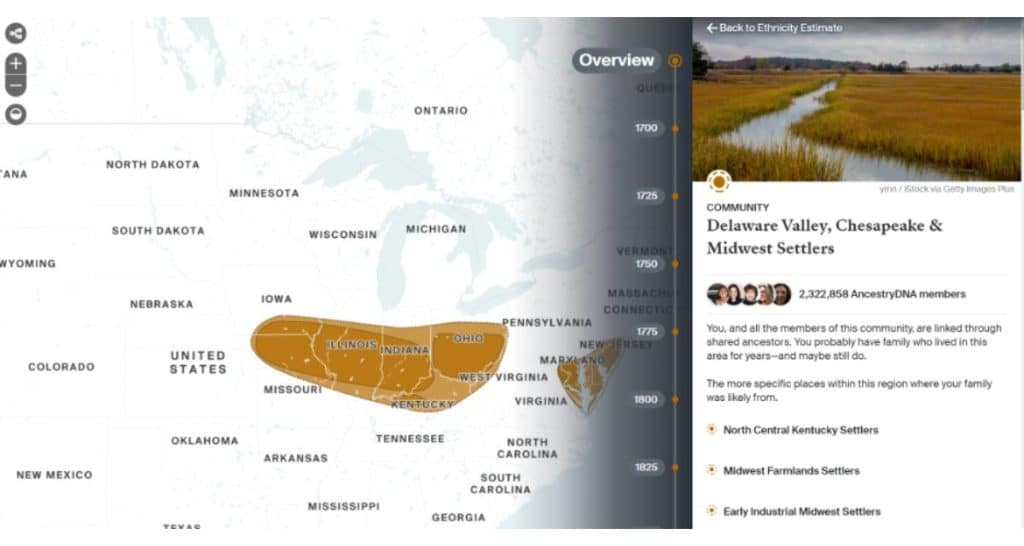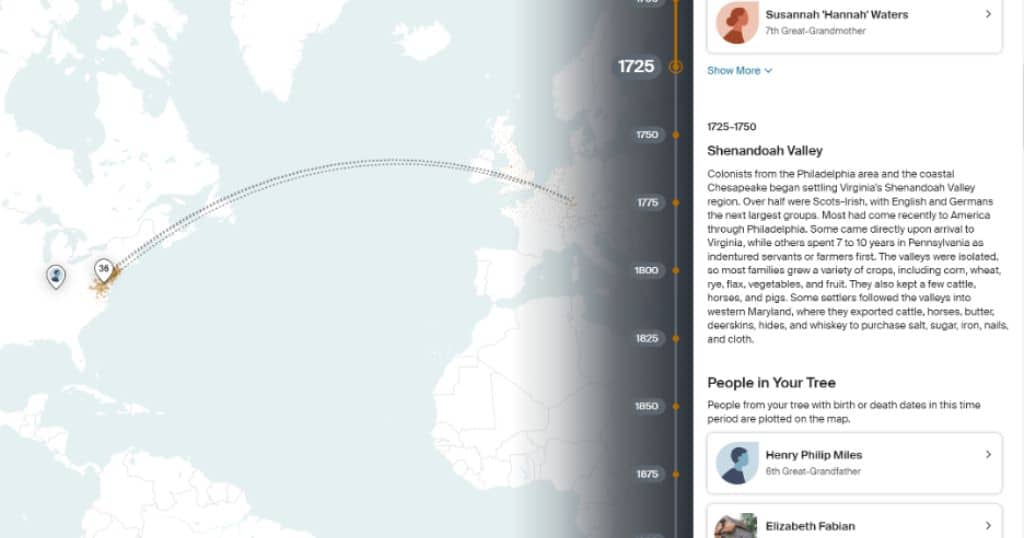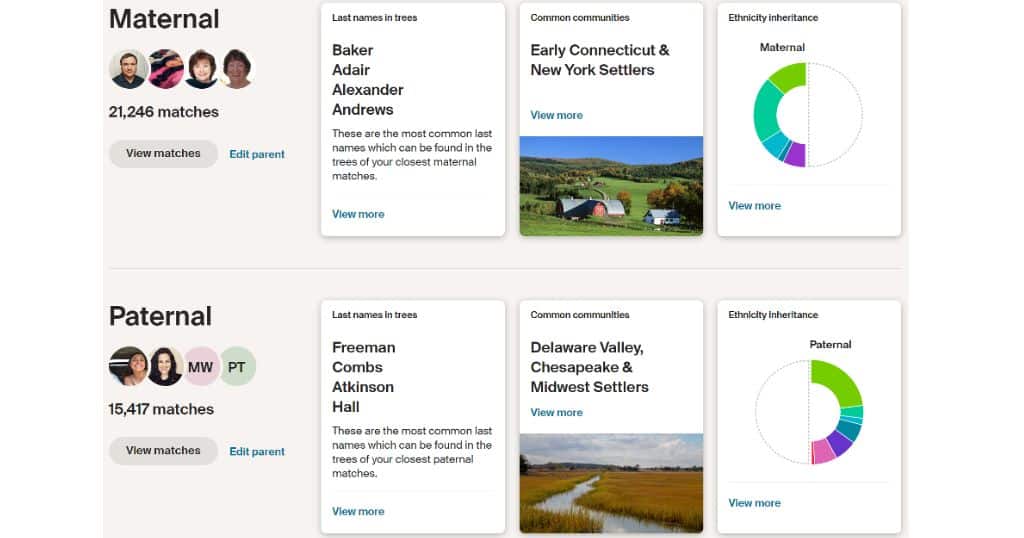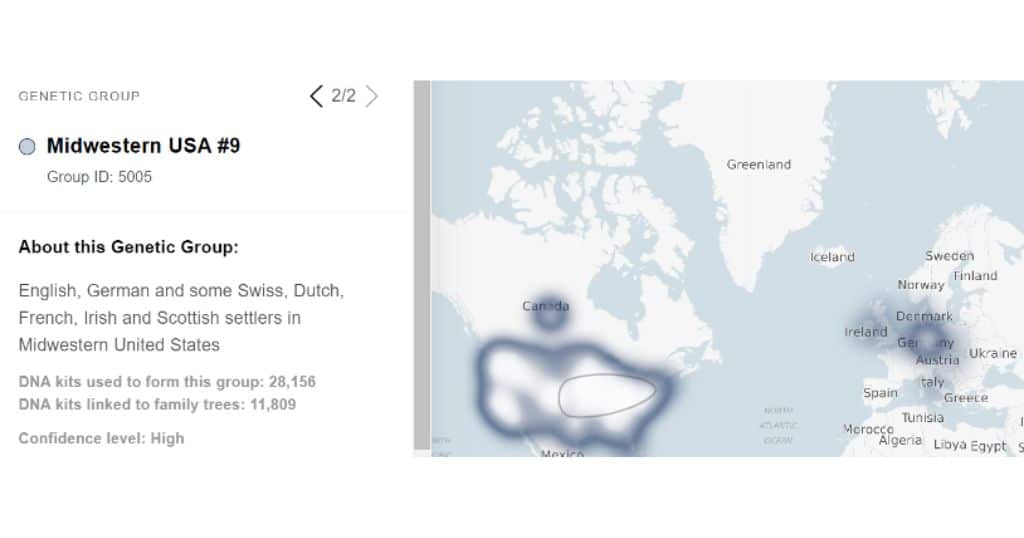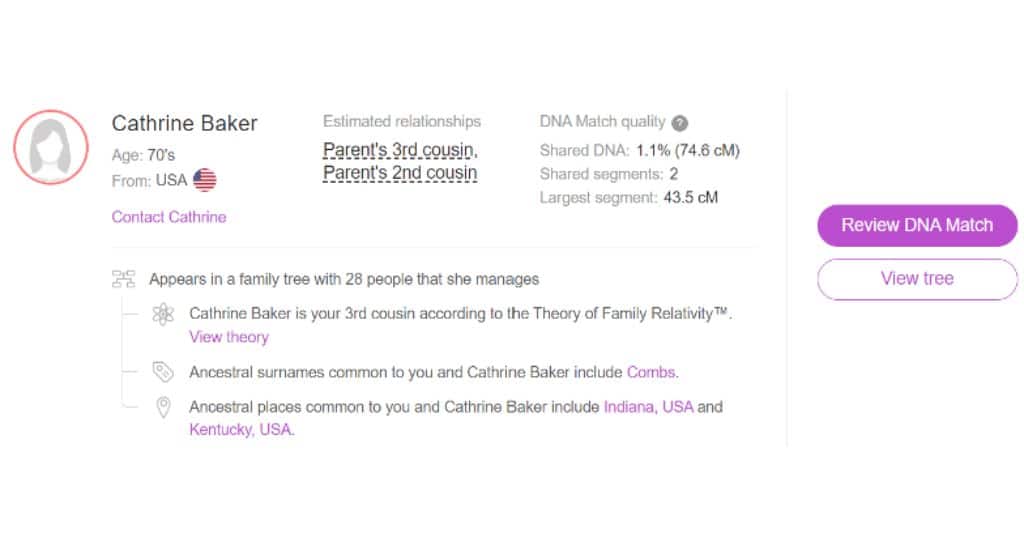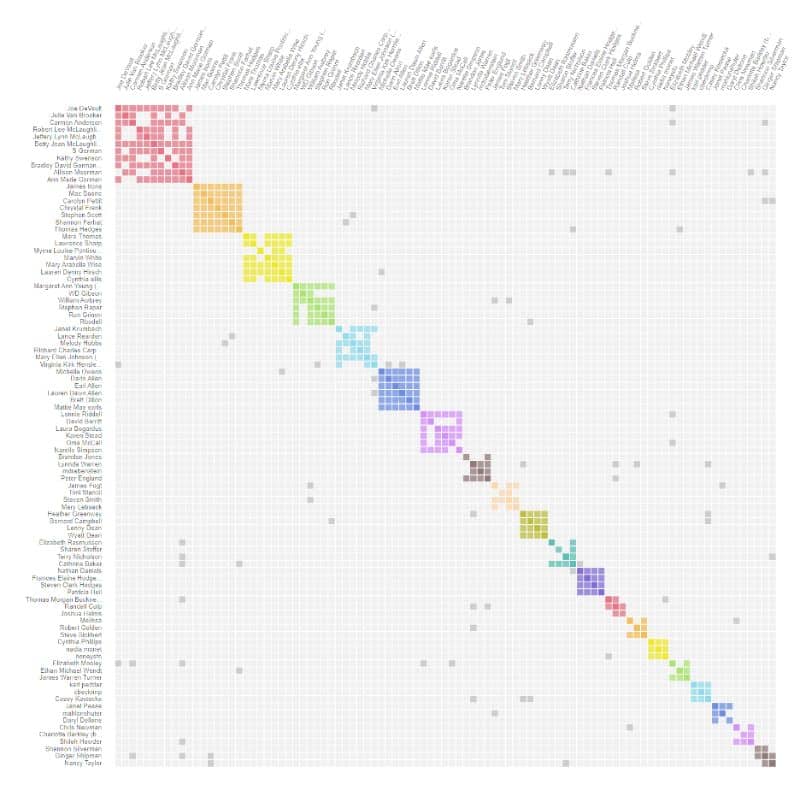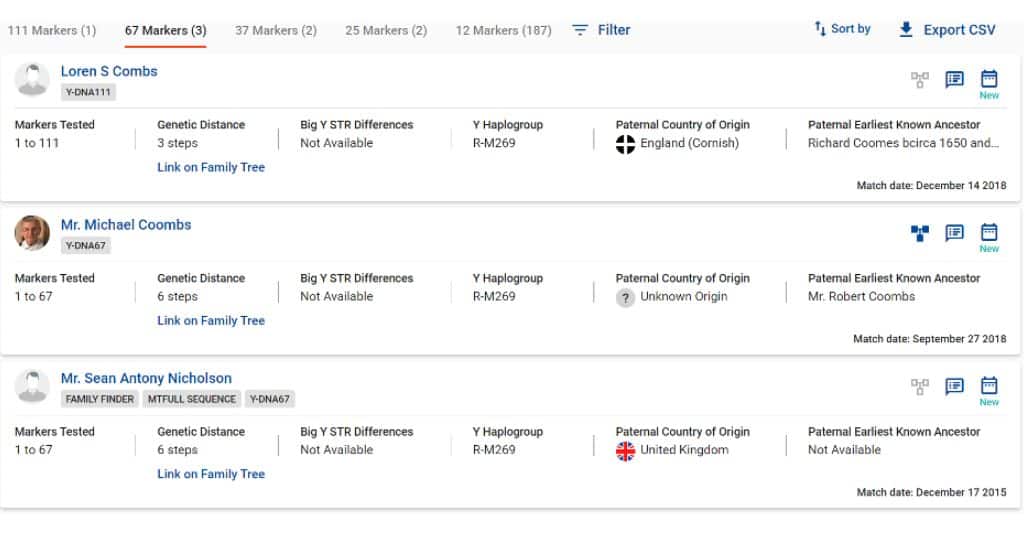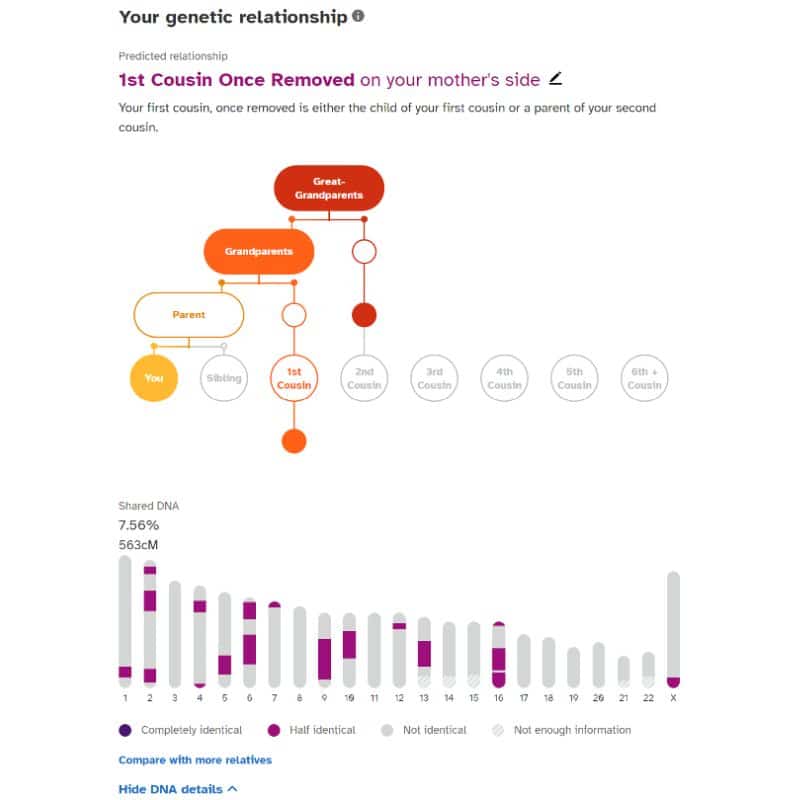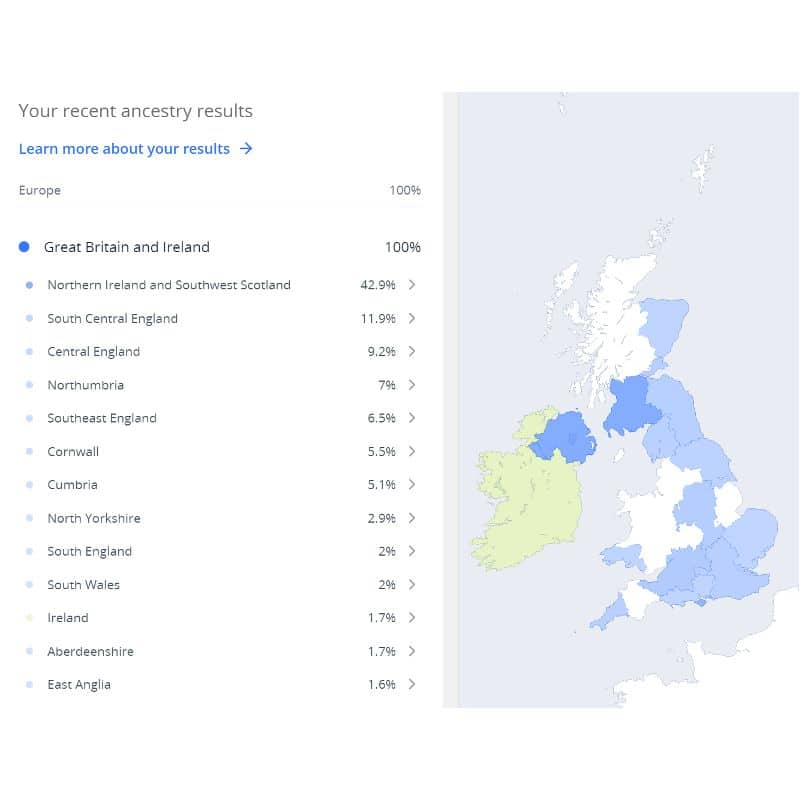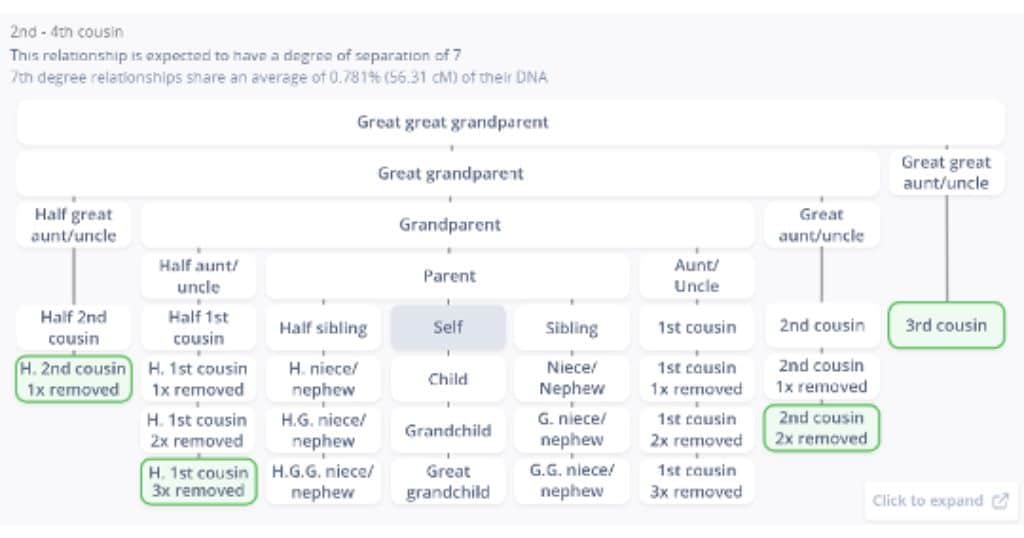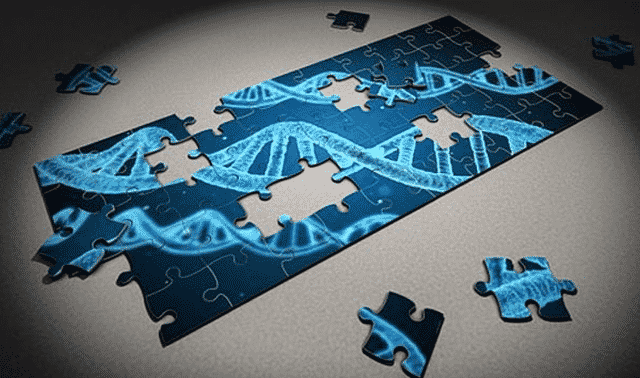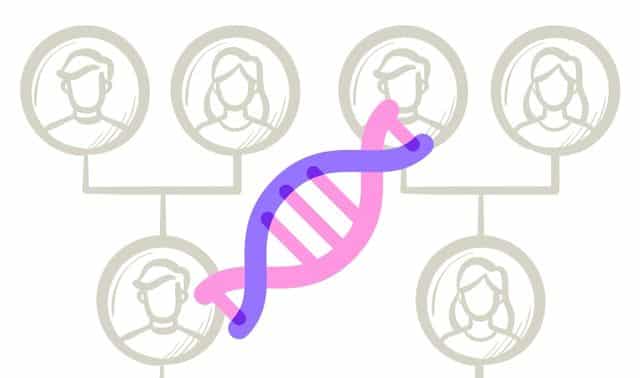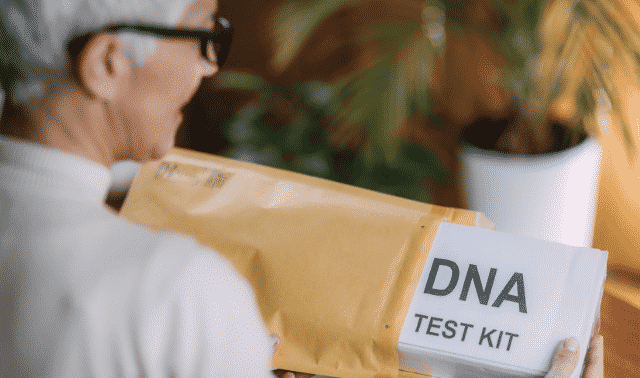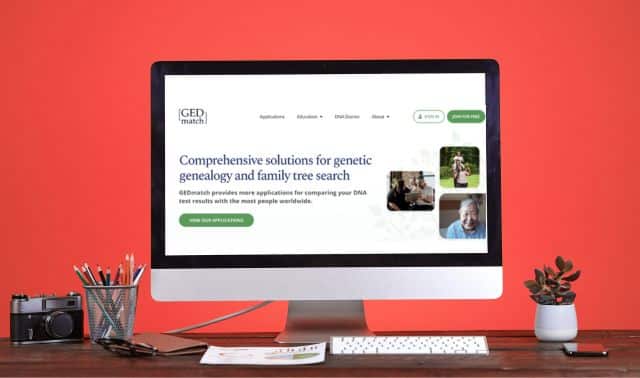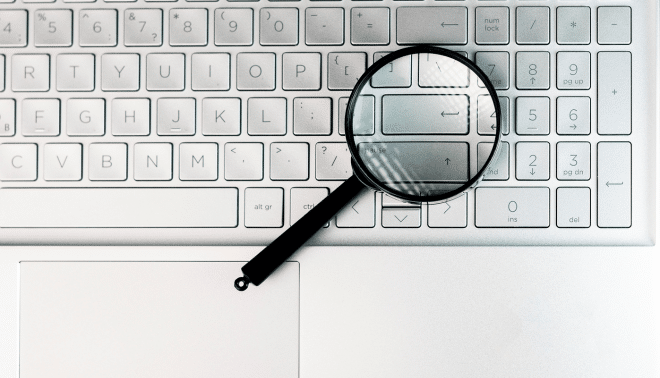
If you are reading this, you are probably considering taking a DNA test (or another one) for genealogical purposes. Many family historians choose to test because they want to break down a brick wall, solve a mystery, or simply because they are curious. While DNA cannot tell you everything about your family tree or heritage, taking a DNA test may help springboard your research. By the end of the article, you should be better equipped to make a choice about where you might like to take the plunge (or your next steps) to untangle your history.
I have tested my DNA with the following:
In this article, I will review not only what each company can offer you but also my thoughts as well. It may seem odd that there are so many choices and things to consider when looking at a DNA testing company. It can be overwhelming. I mean, it’s spit, right? What can be so complicated?
There are are a few things to consider when choosing a DNA test:
Getting a DNA Test: Words of Caution
There are three things I always tell people when they get ready to take a test for the first time: what you will not find, what you might, and what you will find. This part can disappoint many people, so I like to ensure they understand what to expect upfront. I encourage you to read books, articles, and websites on DNA testing and analysis. Ask questions in webinars and any lectures you attend. Oh, and realize that you should return regularly even if you haven’t looked at your results in five years. There is always someone new testing or genetic genealogical discovery being made.
All companies test a person’s autosomal (atDNA). This is the 50% of your DNA you inherit from your father and the 50% from your mother. They will also give you some recent ethnicity information. A few companies will give you haplogroup information (more distant ethnicity) based on your direct maternal or paternal lines. However, as of the publishing of this article, only FTDNA allows for the matching of yDNA (a test taken by men) to trace a direct male lineage or mtDNA (a test that anyone can take) to trace a direct maternal lineage.
Remember, your DNA tests will only tell you what you inherited from your ancestors. It doesn’t mean you do not have the heritage you were brought up being told about, but it might not show up in the DNA. This is also where social history comes in, which is a different article.
You may find other researchers like you love to share information, write back and forth, and help each other break down walls. On the other hand, you may also have radio silence from other test takers. Unfortunately, the lack of responses is one of the more frustrating parts of DNA testing for many family history researchers. There is not much you can do about it but put your best foot forward and hope you get a reply.
The best things you will find are friends, lost family, clues to stories, and the pieces to mysteries you get to solve. While DNA may be one aspect of the genealogical work you do for your (or your friends’) family, it can help lead you to more clues and paper information if it exists. It can also fill that insatiable curiosity about who we are that drew so many of us to this hobby.
AncestryDNA
When most people think DNA tests, the first brand to come to mind is often AncestryDNA, and for good reason. AncestryDNA boasts the largest atDNA database, so theoretically, you will find relatives easier. AncestryDNA also tests a person’s atDNA and allows you to explore that information through their tools called: DNA Story, DNA Matches, and ThruLines.
AncestryDNA’s, DNA Story, is their ethnicity results for your sample. Here you will learn your ethnicity estimates, how you may have inherited these estimates from your parents, and what DNA communities you belong to. There are over 1,800 regions identified in six categories (Africa, America, Asia, Europe, Oceania, and West Asia).
DNA communities were launched in 2017, and people were not sure how they could be used to help with a person’s research. It has improved over the years, and the feature shows your family’s migration patterns.
In conjunction with DNA matches and genealogical research, migration patterns can lead to wonderful breakthroughs. For those unfamiliar with a specific time or place in history, Ancestry provides a timeline showing how your ancestors (if you have a linked family tree) moved across the map at various times.
Ethnicity Breakdown
A relatively new feature at AncestryDNA is the breakdown of your ethnicity by your parents. Your parents do not need to be tested at Ancestry as this is an estimate based on how your DNA is divided through what they call their SideView technology. This same technology allows the company to split your matches into maternal and paternal ancestry. Both can help you narrow down your matches if you are unsure how someone may or may not be related to you.
With the largest database in the world for this type of research, Ancestry has some great tools to get you started and to keep you coming back. Returning is important because there will be new matches frequently with this company. The platform allows you to sort matches, color code them, create groups, make notes, and search relatively easily. Of course, if they have a publicly linked tree, you can also see that information. Which can help with genealogical research by itself. Sorting matches by parent is in Beta testing at the writing of this article, but we all will have at least one match where we have no idea how they relate. A clue such as paternal or maternal can help cut our workload by 50%.
ThruLines™
Finally, ThruLines relies on you and your matches family trees to suggest how you may be related. Since this tool relies on family trees, and not one you have control over, I always tell people to double-check everything. Some trees are better than others, but you should be the one to determine if you trust the suggestion or not. I have found some good hints on ThruLines that lead me in directions I would not have looked at otherwise. All clues are worth investigating!
MyHeritage DNA
MyHeritage is an Israeli-based company founded in 2003. It has a primarily European user base but has been rapidly gaining popularity in the United States and other markets around the world. Many take a MyHeritage cheek swab test in hope of connecting to family in other parts of the world and to help with brick walls and migrating ancestors.
MyHeritage uses atDNA for its matches and testing analysis. You are given an ethnicity estimate based on your atDNA, a list of DNA matches from their testing database, and a few tools to help you analyze your DNA results more. MyHeritage offers many articles and videos to help you understand their features, testing, tools, and the site better located under the tab “Knowledge Base.” If you choose to test here, I suggest watching and reading these resources to maximize your subscription.
As of the writing of this article, they also have an option for users to upgrade their kits to show information about their health and genetic disease markers. When you choose this service, you will receive a report that you can share and discuss with your doctor. This feature may be handy if you are concerned about your genetic health. There is an upcharge for this, but MyHeritage tests do often go on sale.In fact, customers who purchase a DNA kit also get a free 30-day trial of the MyHeritage Complete plan. This gives them full access to 19.4 billion historical records, advanced photo and DNA features, and much more. These features can come in handy both for those looking to overcome long-standing brick walls and for those just getting started with their genealogy research.
Ethnicity Results and Genetic Groups
MyHeritage covers an extensive number of ethnic groups. The ethnicity results are broken into 42 ethnic groups and 2,114 genetic groups based on the control groups used by MyHeritage. One feature I appreciate about the genetic groups results is that you can change the confidence level. The higher the confidence level you set, the more likely the algorithm thinks you should be a member of that grouping. By playing with the confidence level, you can view other groups you may not have seen, which can give clues to your ancestral heritage.
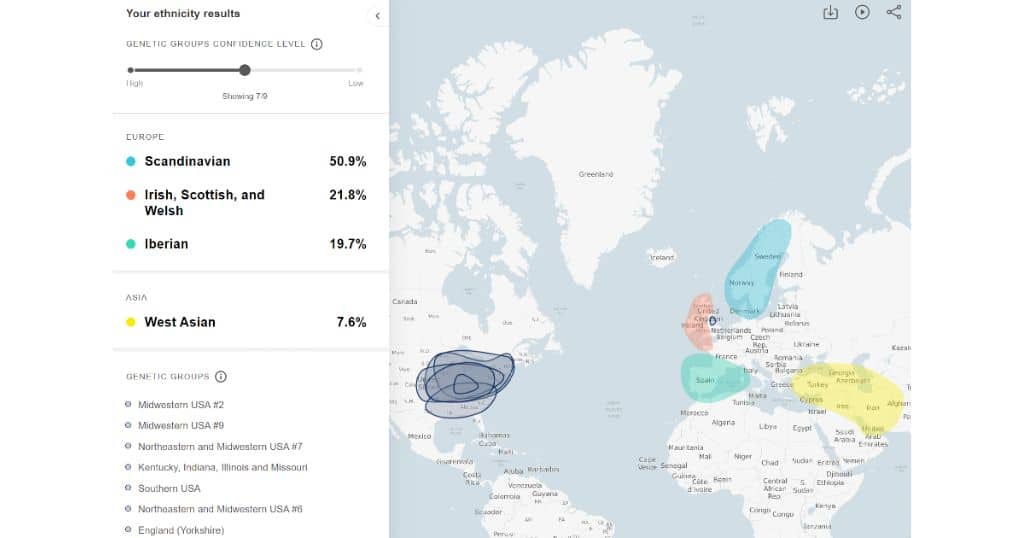
Genetic groups also give the user ample information about how the data were selected, along with historical information, common surnames, ethnicities associated with the groups, related genetic groups, and mutuals in your match list who share this information with you. Again, this is a convenient tool to help narrow down how you may be related to someone in your match list if you have no earthly idea where the connection might be.
The Theory of Family Relativity
MyHeritage offers a unique feature called The Theory of Family Relativity, which allows you to view your DNA matches in the context of specific genealogical information, thanks to a collection of 10 billion records and family trees.
DNA matches are initially sorted by strongest relationship to weakest relationship. Each match gives an overview of how you may be related, if it has determined any smart matches for you, the surnames you have in common, and the places your ancestors shared. However, you can also sort by family tree information, location of the match, shared ethnicity, genetic group, and labels you create. Labels are excellent for organizing your matches into easy-to-find groupings of your choosing. For instance, I created labels for my four grandparent lines to sort my matches into four categories quickly. I do have other labels for other lines I am researching, but sometimes simple is best to start with.
Sorting by tree details is also a great way to determine how a match fits into your genetic family tree. The most beneficial choice is by sorting by family tree. If a match has a family tree you can analyze, that is a great thing to do before you reach out to them. Sorting by smart matches is also a good way to try and determine how you may be related to someone, as it gives you the names of matches that both you and the selected match have in common—one more way to figure you how you may be related to someone if you do not know.
Chromosome Browser
When it comes to DNA tests, it helps to have tangible images of what your results actually look like. That’s where MyHeritage’s Chromosome Browser comes into play. It allows you to easily find genetic similarities between your matches. Uncovering such similarities can help you decide how to approach your genealogy research. MyHeritage’s Chromosome Browser is cleanly designed and easy to read, as it uses just one strip to illustrate both the maternal and paternal chromosome. Exploring the Chromosome Browser is rewarding, and MyHeritage offers a handy guide to help you navigate it with ease.
cM Explainer
Many people have trouble interpreting how the number of cM (centimorgans) equals a familial relationship. The cM Explainer allows the user to type in the cM number and then gives you a list of possible relationships and a family tree chart showing a visual representation of those relationships.
AutoClusters
AutoClusters is another visual tool that shows how you and two other matches are related by grouping them into what the computer program thinks are family sets. While there are outliers, where the computer cannot figure out the family group, they are few compared to most of the results.
FamilyTreeDNA
FTDNA is the only testing company (as of the writing of this article) that tests for matches on atDNA, mtDNA and yDNA. This company also allows family groups, organizations and historical/lineage groups to create DNA group projects. These projects are great for conducting surname and lineage studies. They are free to join, and I encourage you to contact these groups to see how you could be involved.
myOrigins
myOrigins is FTDNA’s ethnicity information. Your results are determined from the company’s 90 different reference populations. You can also compare your ethnicity results to your matches, allowing you to see how you are similar or different. If you are interested in deep ethnic results, Ancient European Origins show how you relate to people thousands of years ago. For instance, my results tell me that I am a 12% metal-age invader, 45% farmer and 43% hunter-gatherer.
Family Finder Matches
atDNA testing and tools allow you to see matches, chart your matches on a chromosome browser, and matrix your matches to determine if you and two other people are matches. Family Finder is the name of the atDNA test and matches list. Again, FTDNA allows you to sort, view and filter by different options to make analysis easier.
With the detailed matches view, the user can also see quite a bit of information in one glance. For instance, if the match has taken another test, the range of possible relationships, amount of shared cMs, and if they are a match on the X-Chromosome. I like the X-Chromosome match, especially for matches that are male. This essentially cuts out half of their family tree since men receive one X-Chromosome. That one X comes from their mother, so you know you will be on their maternal line.
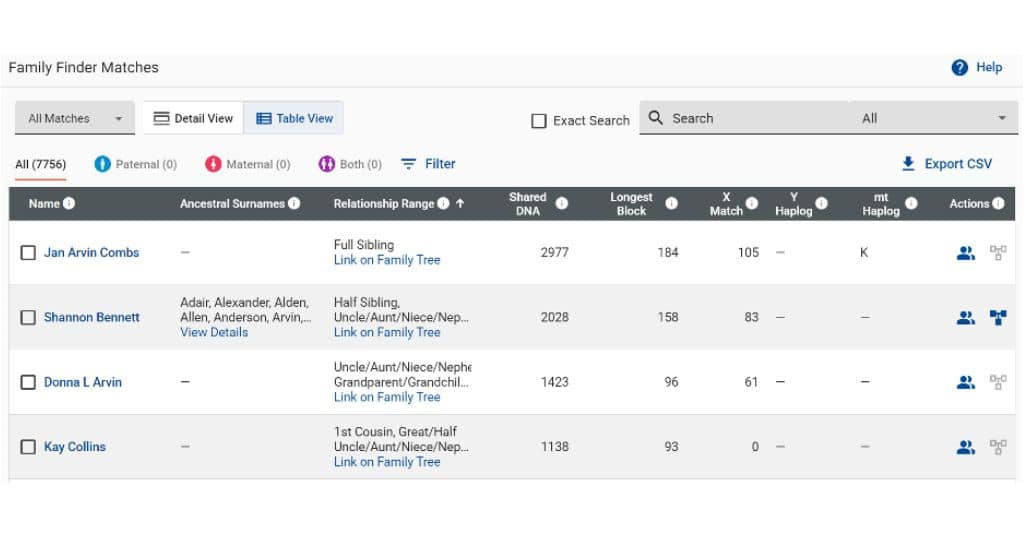
Chromosome Browser
Many people choose to test at FTDNA for their chromosome browser. This graphic representation of your DNA allows you to see how your DNA compares to seven of your matches. Specifically, it will show you where you have specific segments in common with your matches. Some researchers like this information because they can trace segments through family lines and see how DNA is inherited. For example, the browser below shows how my DNA compares to my father (blue), son #1 (red), son #2 (green), my father’s sister (orange), my father’s brother (navy), and my grandmother’s sister (yellow). While I match my father and sons at 50%, I can see how the other three share similar strands of DNA passed to us by our common ancestors.
mtDNA results show matches, as mentioned above, but also deep ancestral ethnicity called haplogroups. Once again, if you are interested in the historical information side of genealogy, you will be fascinated by the descriptions given for the haplogroups and the migration map given for your haplogroup. This information can help give you information about where your maternal line was originally from and why some of your other ethnicity results are the way they are.
Matches for mtDNA are given in a table format from closest matches to furthest away (see below). On the table, you are also given the information on other tests they have taken and if they have a family tree on FTDNA. This can be invaluable as you try to find your common ancestor since women’s surnames changed or were lost through time.

yDNA is set up similarly with haplogroup determination and mapping along with matches. There is a lot to explore with the haplogroup information for yDNA. If you are a history buff, you will find it well worth your while. Looking at my father’s yDNA information, I could show him how he related to famous historical figures, how his haplogroup migrated around the world, and the group projects he should consider joining. Since his surname line is one of my brick wall lines, getting him to join a couple of groups was easy. He wanted to solve that mystery just as much as I did!
Matches with yDNA are setup based on the number of markers tested. You can see which marker test matches to look at, allowing you some freedom with how you perform your analysis. There will be more matches the lower the marker compared, and fewer the more you add. This process eliminates very distant matches and leaves you with matches that are more likely to have a relationship within the recent past. Genealogically speaking that is.
What is nice is you no longer have to hunt for the information on how close a match relationship is to you. At the end of the match chart is the graphic of a calendar. When you click it, the FTDNATiP Report will provide the estimated tie to your common ancestor highlighted on the chart. This can you a lot of time trying to determine your exact paternal relationship!
23andMe
With 23andMe, genealogy and wellness come all in one package. While you can take separate tests, most people who take a 23andMe test appear to do so for both options. However, I will concentrate on the company’s genealogy aspect for this article. One thing to note is that you will get estimated maternal and paternal haplogroup information. There are no matching options for these, but you will get an interesting historical report telling you about your ancient ancestry.
The ethnicity results drill down to more specific geographical areas than the other previous companies mentioned. For example, when I click on the results for my British and Irish ethnicity results, the areas the algorithm thinks my ancestors most likely came from are highlighted. The darker the color, the closer the relationship. While my research does not confirm some of these areas, most of the areas are spot on with what I know is correct.
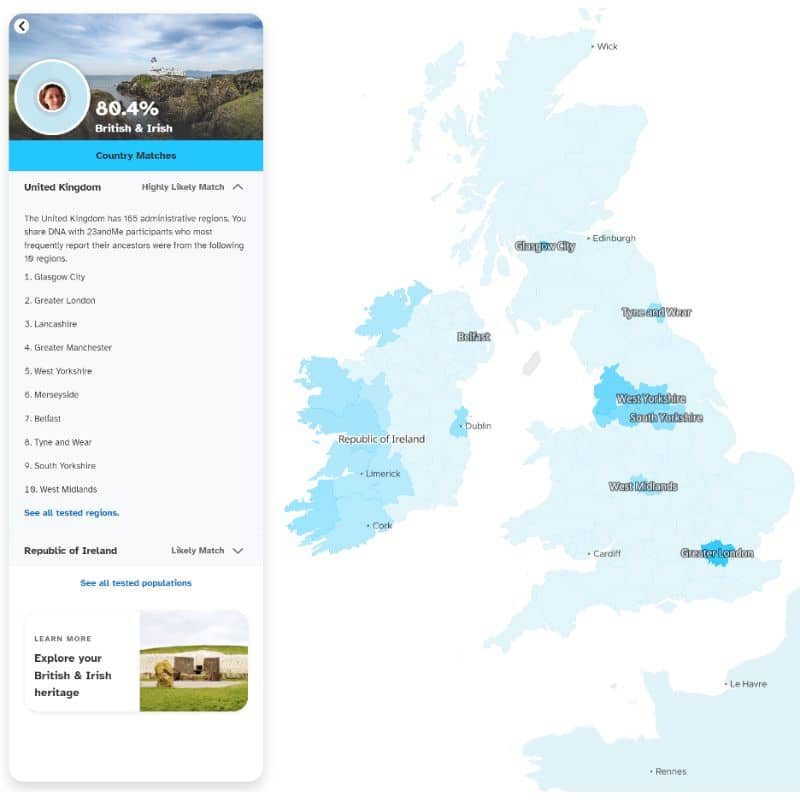
Matches are sorted in several different ways. Of course, by relationship, with the strongest (or closest) first. After that, you can filter your matches by your paternal or maternal line, family names shared (depending on if your match entered that information), and if they are newly added relatives. With 23andMe, you can confirm matches you know and how you are related. These people will then show up on a visual family tree demonstrating how you are connected to one another and where your common ancestors are. For those who are visual learners, this is a tool you will want to investigate more.
When you select one of your matches, a detailed information page on the person pops up. From the page, you can connect with the person, edit the relationship (if you know the exact one), see how you are related at the chromosomal level, where your common ancestor is on a tree, how your ethnicity compares to each other, and family information that was submitted by the match. At the very bottom of the page, you can also determine your shared matches, which, as previously stated, is an excellent way to determine how someone unknown to you is related.
Living DNA
Launched in the UK in 2006 as DNA Worldwide, Living DNA made its US debut in 2016. Since then, it has been a small but steadily growing company introducing new tools and products nearly every year to keep up with the DNA demand. Matching is a fairly new addition but one that was hotly anticipated by users.
The ethnicity breakdowns are what drew many users to the company. Living DNA claimed it could pinpoint the county, or even town level, where your ancestors came from. As a UK-based company, the results for the British Isles were the first to be perfected, but the company expanded from there. Living DNA has 150 regions to which they can link your ethnicity, with an additional 21 British and 72 African sub-regions. While the ethnicity breakdown is missing my mainland Europe ancestry that other companies show, it is very detailed in the UK department.
Matching is still a growing tool for Living DNA, with hints of new features coming this fall. As of the writing of this article, you can find a list of matches in their database where you can sort the matches by how closely you share DNA, alphabetically, if the match is new, and if you share parts of your ethnic map with them. Even better, you can see the country of the match by the flag on the bottom right of the match’s profile picture. So, for those of you trying to connect to people in other countries, making it easy to see at a glance.
Once you select a match to browse, you can gather more information on how you match genetically. Living DNA gives you both cM and percent related, along with a chart showing the possible relationships between you and your match. You can also choose to see the segments graphed out on a chromosome browser or simply the segment information in a table form. While you cannot compare the DNA segments to multiple matches in the database, you can take the information from the table and create your own database for segment analysis.
Finally, Living DNA has also jumped on the health information bandwagon. You can upgrade your account to show information concerning genetic dispositions for nutrition and fitness. Or, if you are extra curious, you can upgrade your kits to tell you about your Neanderthal and Viking heritage as well!
Conclusion
You can see that the major testing companies share many of the same features but also have a few unique ones. This, of course, makes choosing the one right for you that more difficult. What’s important is that you consider the features of each and choose which one has the features you think will work for you.
As of the publishing of this article, you can also upload raw DNA results to all companies except for AncestryDNA. Usually, uploading DNA comes at a discount, but you can upgrade to full website features. Keep an eye out for discounts and sales as well. They usually occur around holidays or DNA Day in April, allowing you to get the most bang for your buck. This can be very important if you choose to test at multiple companies, bringing that investment price down.
Whichever test you choose, the most important thing is to try to enjoy the process, read as much as possible if you get stuck, and investigate all your findings. DNA testing can be full of ups, downs, joys, and disappointments, just like paper genealogy research!
Related Reads
A version of this article appeared in the October/November 2018 issue of Family Tree Magazine. Last Updated: August 2023

